ホーム → 文法 → DoJG main menu → 基本 → Basic Page 434
Verb (Irregular)
| Someone or something has some (semi)permanent attribute. | Have |
| 【Related Expression: は~が】 |
(ks). 洋子は長い足をしている・います。
Yoko has long legs.
(a). 一男は丈夫な体をしています。
kazuo has a strong body.
(b). この机は丸い形をしている。
This table has a round shape.
1. The sentence pattern is:
A bodily part or an attribute must be inalienably possessed by the subject. In other words, it must be such an essential part of the possessor (=subject) that he/it cannot exist without the part or the attribute.
2. In the main clause the verb する always takes the ている form, but in a relative clause ている may be replaced by た as in:
【Related Expression】
Sentences of this construction can be restated using the は~が construction as follows:
Thus, the Key Sentence example can be rephrased as:
[1]
The only perceptible difference between Key Sentence and [1] is that the latter sentence is more analytical than the former. In other words, in Key Sentence 長い足 'long legs' is one unit, but in [1] 足 'legs', is first presented as a single unit and is then further characterized as 長い 'long'.